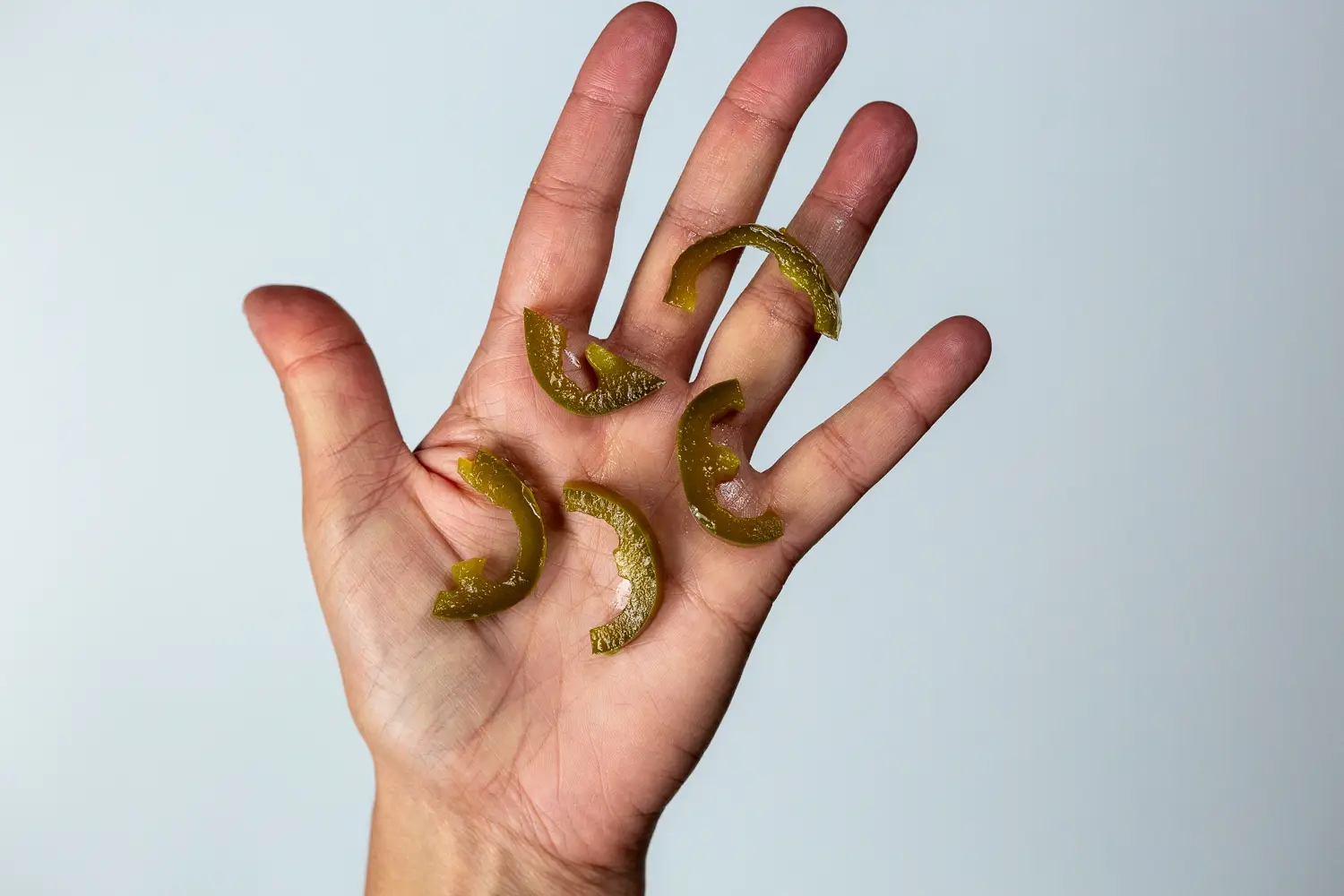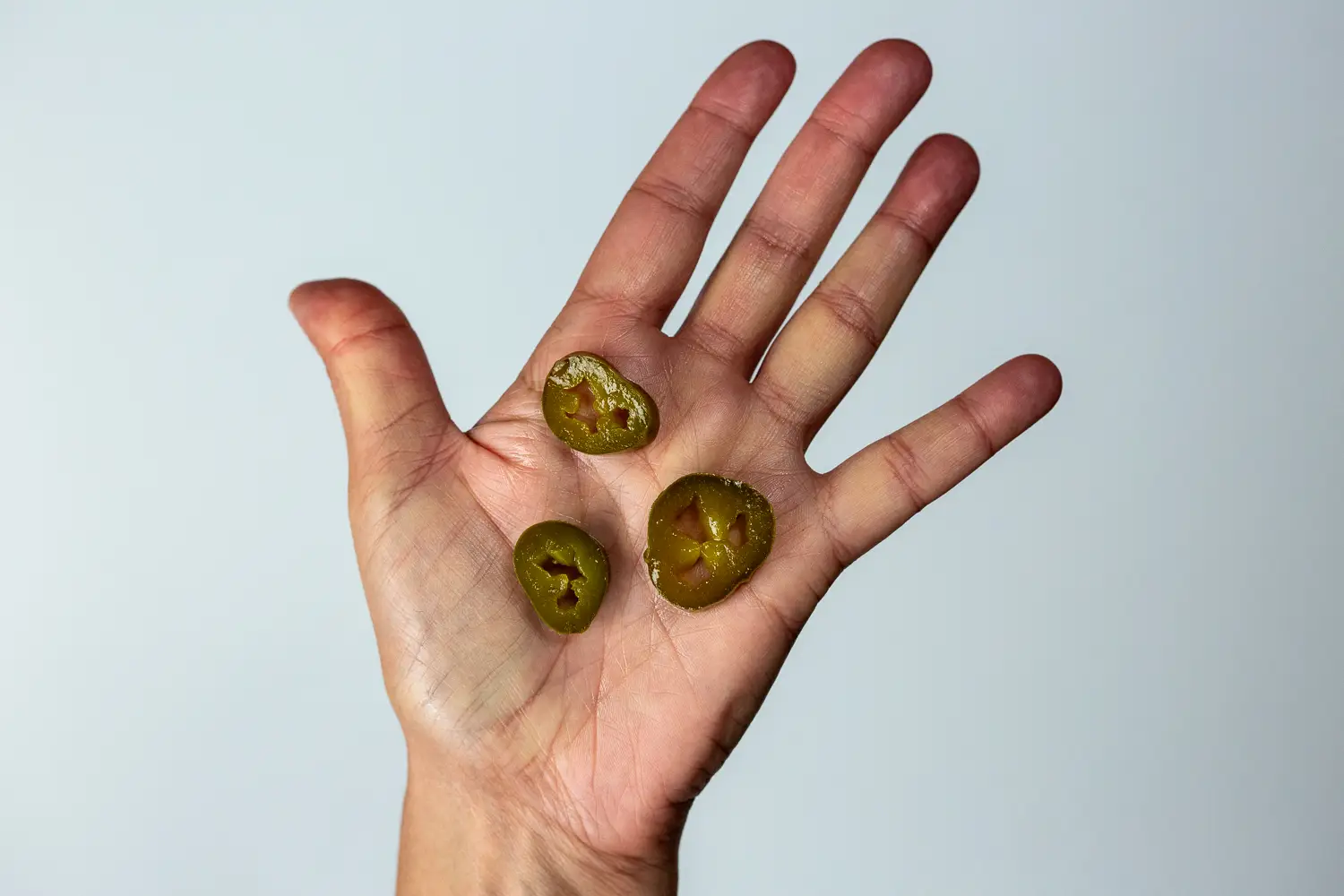Access our First Foods® Database in the Solid Starts App.
Learn moreChili Pepper
Vegetable
Age Suggestion
6 months
Iron-Rich
No
Common Allergen
No

When can babies eat chili peppers?
Chili peppers may be introduced as soon as baby is ready to start solids, which is generally around 6 months of age. However, you may want to wait until baby has tried a variety of other foods. Because chili peppers are often very hot and added to dishes, baby may get confused about which solid foods are always, inherently spicy and which aren’t. Note that chili peppers may cause a harmless rash where they come into contact with skin, as well as cause or worsen diaper rash and digestive upset.
Where do chili peppers come from?
Our planet is home to more than 50,000 varieties of peppers, all of which stem from peppers of the Americas that were spread worldwide through colonization, migration, and trade. Over generations, chili peppers have been bred to grow in diverse climates, and as a result they have unique tastes. For example, espillette peppers from the Basque foothills taste fruitier than vegetal-flavored jalapeño peppers that thrive along the Veracruz coast in Mexico. Their heat also varies widely, and some cultures use Scoville heat units to measure flavor intensity. Anaheim peppers, banana peppers, and poblanos tend to be milder with a lower Scoville level than bird’s eye chilis, fatalii, ghost peppers, and piri piri.
How do you prepare chili peppers for babies with baby-led weaning?
Every baby develops on their own timeline, and the suggestions on how to cut or prepare particular foods are generalizations for a broad audience.
6 to 8 months old:
Let baby taste a scant amount of your food that contains finely chopped fresh chilis or chili powder, but consider waiting until baby is a little older to regularly offer very spicy dishes containing very hot peppers. At first, the goal is to help baby make the connection that food is enjoyable, not painful. Second, we want baby to understand what a variety of foods taste like independent of the spice. When you decide to let baby try a food with hot pepper, balance the heat by serving it alongside a creamy food like mashed avocado, plain yogurt, or an age-appropriate milk.
9 to 11 months old:
Stir a small amount of finely chopped chili pepper (raw or cooked) or chili powder into food to share with baby, like bean chili, pulled chicken, or vegetable stew. If you would like to lower the heat, discard the seeds and pith (the veins that hold the seeds) as they contain higher concentrations of capsaicin. Have on hand a creamy food like avocado or plain yogurt to help offset any fiery sensation from the hot pepper. Watch baby’s hands—many children at this age rub their faces and eyes while eating, so try to intervene before they introduce chili pepper into their eyes.
12 to 17 months old:
Offer raw or cooked chili pepper cut into small, thin strips or semi-circles, or continue to finely chop and stir into the child’s meals. Removing the white membrane and seeds from inside the pepper can help reduce the heat, if desired. Serve with creamy or dairy-based foods, or a small cup of milk, to help the child manage the heat. If a child is not accustomed to spicy food, let them know to expect big flavor before they bite into the dish.
18 months old+:
Continue seasoning food with ground chili powder to share with the child or try offering foods that contain raw or cooked chili pepper cut into thin circles. At this age, many toddlers are ready to take bites from larger pieces or whole foods. When you feel the child is ready, you can try serving a whole cooked hot pepper, such as a chile en nogada or a stuffed jalapeño—just remove the stem first, if it was cooked with the stem intact. If the chili pepper is small, model taking a bite of your own pepper and encourage the child to take small bites. If the pepper is larger, consider cutting it into more manageable pieces for the child. Serve with dairy or another fatty food to help the child manage the heat, and let the child know that the dish may be spicy before they take a big bite.


Check out our 100 Dinners for Babies and Toddlers for family-friendly recipes that are easy to make.
Videos
Are chili peppers a common choking hazard for babies?
No. When finely chopped, chili peppers are not a choking hazard, though their heat can make babies cough and salivate more (which can increase gagging). When sharing foods with chili pepper, serve baby’s portion with a creamy food like mashed avocado, plain yogurt, or an age-appropriate milk to balance the heat. As always, make sure you create a safe eating environment and stay within an arm’s reach of baby during meals. For more information on choking, visit our sections on gagging and choking and familiarize yourself with the list of common choking hazards.
Are chili peppers a common allergen?
No. Allergies to chili peppers are rare, but have been reported. Contact reactions (such as temporary rashes, eye irritation, respiratory difficulty, and digestive upset) to spicy peppers like chilis are frequently mistaken for allergic reactions. This is due to the irritating qualities of capsaicin (the spicy component in chili peppers) in sensitive individuals and is not typically a true allergic reaction.
People who are allergic to latex or certain plant pollens may also be allergic to chili peppers or experience Oral Allergy Syndrome (also known as pollen food allergy syndrome). Oral Allergy Syndrome typically results in short-lived itching, tingling, or burning in the mouth and is unlikely to result in a dangerous reaction. Cooking, canning, and/or peeling chili peppers may help minimize and even eliminate the reaction.
Note that spicy foods like chili peppers may cause a harmless rash around the mouth while baby eats or may cause or worsen diaper rash. Talk to baby’s doctor about applying a thin layer of barrier cream or ointment—such as pure petroleum jelly or a plant-based oil/wax balm—to baby’s face and bottom to help prevent contact rashes.
As with introducing any new food, start by serving a small quantity for the first few servings, and watch closely for any signs of an allergic reaction. As time goes on, you can offer a larger quantity if the child enjoys the flavor.
Are chili peppers healthy for babies?
Yes. Depending on the pepper variety, chilis offer vitamin C to help boost immunity and iron absorption, in addition to fiber and vitamins A, B6, and E. They also offer antioxidants to support the body’s resilience against stressors. Even dried chili powder offers some vitamin A and vitamin C.
Contrary to popular belief, babies can enjoy big flavors, including hot peppers, but it is important to start with small tastes and adjust the spice level to suit the child. The goal is to avoid a negative experience from too much heat and to ensure that the child does not get confused about which foods are inherently spicy. To reduce the heat of a chili pepper, remove the seeds and pith (the veins that hold the seeds) and taste the food before offering to baby. If it seems too spicy, adjust the seasonings to mellow the flavor.
★Tip: Balance the heat by serving chili pepper alongside creamy foods like mashed avocado, plain yogurt, or an age-appropriate milk like breast/human milk, formula, or cow’s milk. Acidic or water-based foods and drinks can intensify the heat.
When can babies have chili powder?
Chili powders (including cayenne, paprika, and chili pepper spice blends) may be introduced in small amounts as soon as baby is ready to start solids, which is generally around 6 months of age. Consider waiting to regularly share foods with chili powder until baby is familiar with the flavor of the food in its un-spiced form. This way, there is a greater chance of baby understanding which foods are inherently spicy if a meal is a little too spicy for baby’s tastes.
Can babies have hot sauce?
It depends on the specific type of hot sauce and baby's individual tolerance for spicy food. Hot sauces can cause a burning sensation in the mouth, and we want to try and offer enjoyable eating experiences early on in baby’s solids journey. That said, some hot sauces are quite mild, and every person’s individual tolerance to spice is different and can change with time. When you decide to let a child taste hot sauce, start with a very tiny amount of a mild variety and let them choose how much they would like. For example, drip a small amount onto their plate for dipping rather than drizzling onto their food.
Can chili peppers help babies poop?
No. Chili peppers are not typically consumed in large enough amounts to impact baby’s pooping. However, chili pepper can play a role in supporting baby’s rapidly developing gut microbiome (the bacteria and microorganisms in baby’s intestines), which can help support healthy digestion overall. That said, excess consumption of chili peppers may cause digestive upset and possibly irritation in the diaper area when pooping due to the spiciness of the peppers, so start small when introducing any spicy food to baby. Remember that pooping patterns can vary significantly from baby to baby. If you have concerns about baby’s pooping and digestive function, talk to your pediatric healthcare provider.
Our Team
Written by
Expert Tips Delivered to Your Inbox
Sign up for weekly tips, recipes and more!
Copyright © 2025 • Solid Starts Inc







